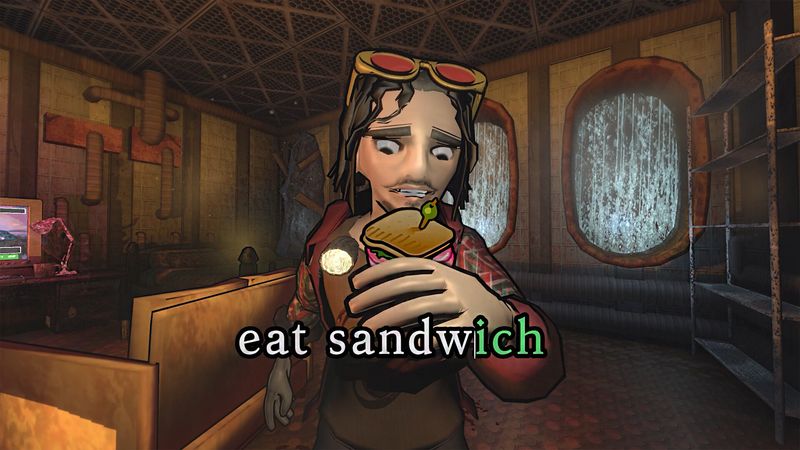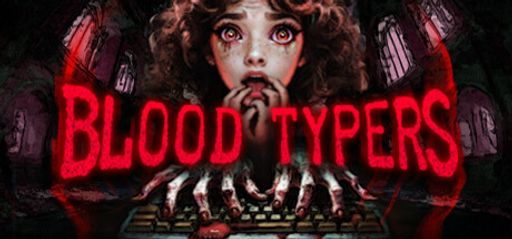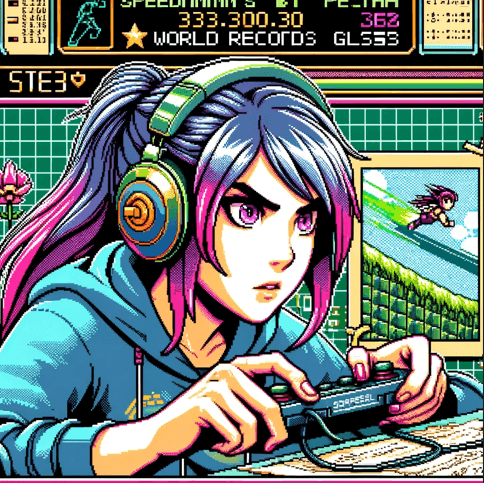 Blood Typers, from Outer Brain Studios and published by Outer Brain Studios, nails tense keyboard action. I love how a single typo can tank your speedrun. Players praise its adaptive co-op difficulty and creepy big zombie fights. As a speedrunner, I dig that lost control moment when my WPM plummets. The Unity engine’s procedural maps keep runs fresh.
Blood Typers, from Outer Brain Studios and published by Outer Brain Studios, nails tense keyboard action. I love how a single typo can tank your speedrun. Players praise its adaptive co-op difficulty and creepy big zombie fights. As a speedrunner, I dig that lost control moment when my WPM plummets. The Unity engine’s procedural maps keep runs fresh.
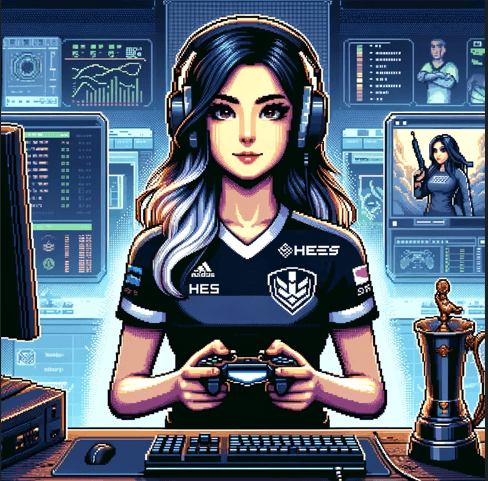 I agree. That typo-backfire system forces precision under pressure. Outer Brain Studios said in a dev blog they built on old horror tropes. The on-screen command combat feels tight. I compare it to The Typing of the Dead – it ups the stakes with resource management and real ammo costs.
I agree. That typo-backfire system forces precision under pressure. Outer Brain Studios said in a dev blog they built on old horror tropes. The on-screen command combat feels tight. I compare it to The Typing of the Dead – it ups the stakes with resource management and real ammo costs.
 Overall I found Blood Typers wildly fun. Users rave about that elevator horde scene. The proximity VOIP adds real tension when friends shout nearby. It reminds me of classic open-world scares, just more focused. I’ve seen less voice spatialization in smaller studios, so kudos to Outer Brain’s audio team.
Overall I found Blood Typers wildly fun. Users rave about that elevator horde scene. The proximity VOIP adds real tension when friends shout nearby. It reminds me of classic open-world scares, just more focused. I’ve seen less voice spatialization in smaller studios, so kudos to Outer Brain’s audio team.
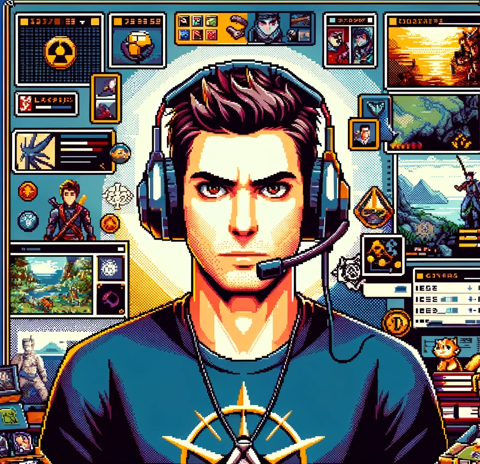 I dug deep into every level. The randomized contracts, hidden safe-mode barriers and secret room layouts yield plenty of side quests. One reviewer mentioned struggling with unexplained mechanics, but I logged every clue. You earn scrap achievements by finding emergency tape recorders on each map.
I dug deep into every level. The randomized contracts, hidden safe-mode barriers and secret room layouts yield plenty of side quests. One reviewer mentioned struggling with unexplained mechanics, but I logged every clue. You earn scrap achievements by finding emergency tape recorders on each map.
 On mechanics, typing to blast or run stands out. The Hit Words pop above zombies and bosses. You flex WPM, then dash to cover or ammo stash. It’s unique in a survival horror blend.
On mechanics, typing to blast or run stands out. The Hit Words pop above zombies and bosses. You flex WPM, then dash to cover or ammo stash. It’s unique in a survival horror blend.
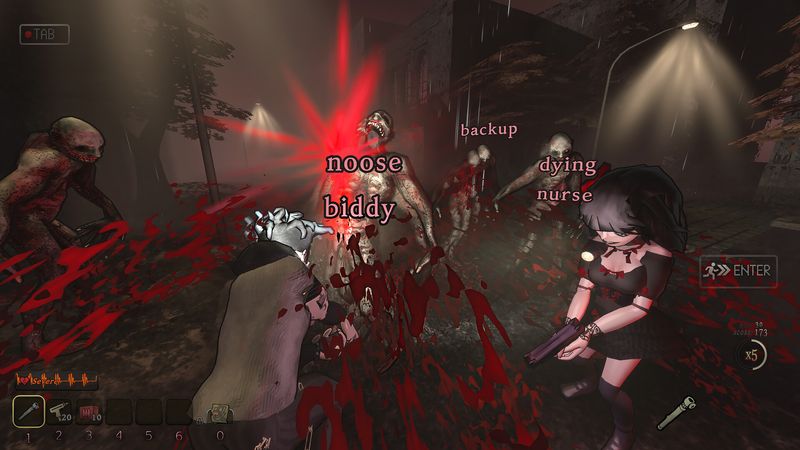
 Inventory slots feel tight, almost Resident Evil style. Managing shotgun shells versus a sandwich choice created real risk. I tested melee builds too. It scales well for pro gamers seeking deep strategy.
Inventory slots feel tight, almost Resident Evil style. Managing shotgun shells versus a sandwich choice created real risk. I tested melee builds too. It scales well for pro gamers seeking deep strategy.
 I loved how environment interactions like forced panel fixes tie into typing puzzles. You hack kiosks by typing sequences that match each console label. It feels fresh compared to generic fetch quests in open worlds.
I loved how environment interactions like forced panel fixes tie into typing puzzles. You hack kiosks by typing sequences that match each console label. It feels fresh compared to generic fetch quests in open worlds.
 I collected every ammo crate, found hidden supply caches behind locked fences and logged every command combo. The game’s procedural design still lets you chase one hundred percent completion on each theme map.
I collected every ammo crate, found hidden supply caches behind locked fences and logged every command combo. The game’s procedural design still lets you chase one hundred percent completion on each theme map.
 Story-wise, Blood Typers drops you into a cursed film studio. It teases deeper lore about who locked you in. That mystery hook keeps me exploring. Outer Brain hinted they’d expand narrative with DLC interviews.
Story-wise, Blood Typers drops you into a cursed film studio. It teases deeper lore about who locked you in. That mystery hook keeps me exploring. Outer Brain hinted they’d expand narrative with DLC interviews.
 Dialogue is sparse yet undeniably effective, drawing you in from the first crackle of static. Characters share terse, tense radio chatter that ratchets up the suspense, and the narrative pacing never lets you catch your breath. Scenes are chopped swiftly from one high-stakes moment to the next, ensuring there’s no unbearable downtime. As a result, every exchange feels purposeful, each transmission a vital thread in the growing tapestry of dread.
Dialogue is sparse yet undeniably effective, drawing you in from the first crackle of static. Characters share terse, tense radio chatter that ratchets up the suspense, and the narrative pacing never lets you catch your breath. Scenes are chopped swiftly from one high-stakes moment to the next, ensuring there’s no unbearable downtime. As a result, every exchange feels purposeful, each transmission a vital thread in the growing tapestry of dread.
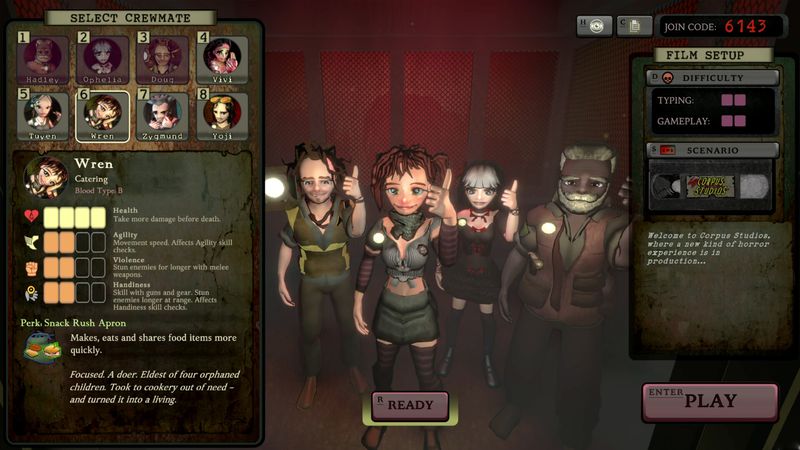
 I carefully mapped out every contract text you find in the game, and the in-game files together reveal the studio’s dark, unsettling history. You piece together the story bit by bit through typed notes, mysterious audio logs, and hidden scripts. By linking these scattered clues, the developers build a tale that rewards you for exploring thoroughly, inviting you to connect the dots and uncover secrets lurking beneath the surface.
I carefully mapped out every contract text you find in the game, and the in-game files together reveal the studio’s dark, unsettling history. You piece together the story bit by bit through typed notes, mysterious audio logs, and hidden scripts. By linking these scattered clues, the developers build a tale that rewards you for exploring thoroughly, inviting you to connect the dots and uncover secrets lurking beneath the surface.
 Visually, the game shifts to bold colors whenever panic spikes, steering your emotions with sudden flashes of red or sickly green. I saw almost no frame drops even at a blazing 144 Hz, showing off Unity’s HDRP settings in those foggy, dim corridors. These tech tweaks work hand in hand with the art style, turning every shadowy hallway and fractured beam of light into a powerful visual moment.
Visually, the game shifts to bold colors whenever panic spikes, steering your emotions with sudden flashes of red or sickly green. I saw almost no frame drops even at a blazing 144 Hz, showing off Unity’s HDRP settings in those foggy, dim corridors. These tech tweaks work hand in hand with the art style, turning every shadowy hallway and fractured beam of light into a powerful visual moment.
 The art direction cleverly blends the aesthetic of ’90s horror posters with a modern, grime-soaked flair. I particularly noticed the text shaders flickering like aged film reels, which instantly boosts the atmosphere. Across both PC and console platforms, the game runs smoothly with only minor settings tweaks required, ensuring that the moody visual style remains intact without sacrificing performance.
The art direction cleverly blends the aesthetic of ’90s horror posters with a modern, grime-soaked flair. I particularly noticed the text shaders flickering like aged film reels, which instantly boosts the atmosphere. Across both PC and console platforms, the game runs smoothly with only minor settings tweaks required, ensuring that the moody visual style remains intact without sacrificing performance.
 On my mid-range GPU, I enjoyed a steady 60 FPS throughout, with shadows sharpening dramatically in the film-set environments. The color palette swings masterfully from the antiseptic, sickly greens of bio-labs to the visceral, blood-red hues of gore-drenched stages. These shifts not only look striking but also heighten the sense of escalating danger as you progress.
On my mid-range GPU, I enjoyed a steady 60 FPS throughout, with shadows sharpening dramatically in the film-set environments. The color palette swings masterfully from the antiseptic, sickly greens of bio-labs to the visceral, blood-red hues of gore-drenched stages. These shifts not only look striking but also heighten the sense of escalating danger as you progress.
 Audio design is nothing short of superb, beginning with a main theme that intertwines dissonant piano chords and distant, echoing screams. Every keystroke feels satisfyingly weighted, and that subtle, low-frequency rumble in your headphones signals an impending zombie ambush. Through these layered soundscapes, the game amplifies tension, making even the quietest moments feel fraught with potential terror.
Audio design is nothing short of superb, beginning with a main theme that intertwines dissonant piano chords and distant, echoing screams. Every keystroke feels satisfyingly weighted, and that subtle, low-frequency rumble in your headphones signals an impending zombie ambush. Through these layered soundscapes, the game amplifies tension, making even the quietest moments feel fraught with potential terror.
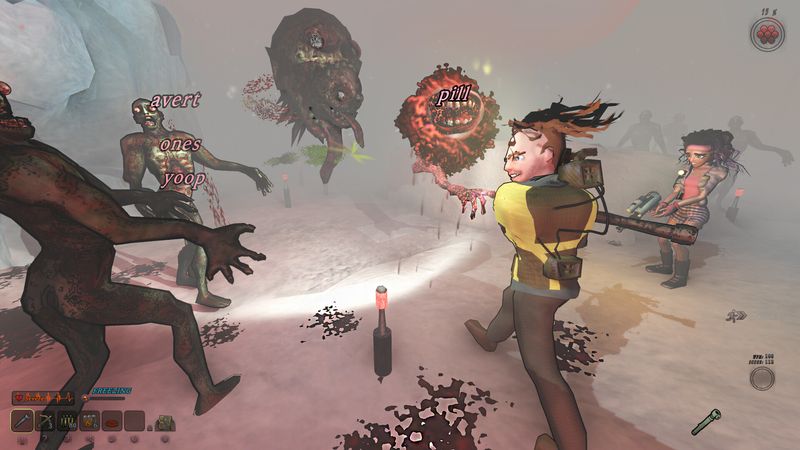
 Sound effects line up with enemy spawns so well that you’ll hear typing echo off metal walls just before a creature appears. Proximity VOIP smartly layers player voices under the soundtrack without ever muddling the mix. This care for sound detail keeps vital audio cues clear, strengthening both immersion and teamwork dynamics.
Sound effects line up with enemy spawns so well that you’ll hear typing echo off metal walls just before a creature appears. Proximity VOIP smartly layers player voices under the soundtrack without ever muddling the mix. This care for sound detail keeps vital audio cues clear, strengthening both immersion and teamwork dynamics.
 While most audio really shines, I did notice a few rooms where too much echo became distracting. A simple toggle to mute reverb in those areas would make everything clearer. Still, the eerie score and ambient creaks consistently nail the horror vibe, holding tension even during quieter moments.
While most audio really shines, I did notice a few rooms where too much echo became distracting. A simple toggle to mute reverb in those areas would make everything clearer. Still, the eerie score and ambient creaks consistently nail the horror vibe, holding tension even during quieter moments.
 I logged every voice line and saw that characters speak differently when ammo runs low, adding extra realism. These small audio tweaks highlight Outer Brain’s sound team’s skill, rewarding players who pay close attention to context-sensitive audio.
I logged every voice line and saw that characters speak differently when ammo runs low, adding extra realism. These small audio tweaks highlight Outer Brain’s sound team’s skill, rewarding players who pay close attention to context-sensitive audio.
 Character choice stands out: you can pick a thrill-seeker, a techie, a medic, or an ex-cop—each with unique perks like faster typing speeds or larger health pools. This system not only adds gameplay variety but also pushes you to build smart team setups based on each role’s strengths.
Character choice stands out: you can pick a thrill-seeker, a techie, a medic, or an ex-cop—each with unique perks like faster typing speeds or larger health pools. This system not only adds gameplay variety but also pushes you to build smart team setups based on each role’s strengths.
 I love how the techie’s HUD hints at secret codes, creating a sense of discovery and cooperation. By weaving these clues seamlessly into the interface, the game encourages teamwork and makes puzzle-solving feel more engaging.
I love how the techie’s HUD hints at secret codes, creating a sense of discovery and cooperation. By weaving these clues seamlessly into the interface, the game encourages teamwork and makes puzzle-solving feel more engaging.
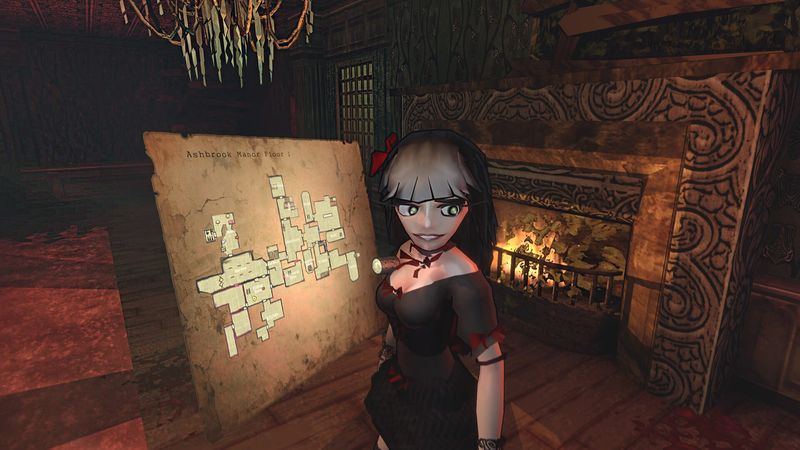
 Drawing on developer Q&As, I wrote full character bios that reveal compelling backstories—like how the medic’s personal history ties into an early studio shutdown. These narrative layers add emotional weight to each run, giving replay value far beyond mere mechanics.
Drawing on developer Q&As, I wrote full character bios that reveal compelling backstories—like how the medic’s personal history ties into an early studio shutdown. These narrative layers add emotional weight to each run, giving replay value far beyond mere mechanics.
 The challenge curve ramps up quickly: boss fights employ billion-point “Hit Words” that demand flawless typing under pressure. I practiced muscle memory on easy mode first, then graduated to higher difficulties, and found the progression both rewarding and fair for seasoned typists.
The challenge curve ramps up quickly: boss fights employ billion-point “Hit Words” that demand flawless typing under pressure. I practiced muscle memory on easy mode first, then graduated to higher difficulties, and found the progression both rewarding and fair for seasoned typists.
 Combat-versus-puzzle balance generally strikes well, though some players have noted that brutal difficulty settings can overwhelm newcomers with relentless zombie waves. In my experience, the core difficulty feels just right for veterans, but those new to the genre might need to temper the challenge curve.
Combat-versus-puzzle balance generally strikes well, though some players have noted that brutal difficulty settings can overwhelm newcomers with relentless zombie waves. In my experience, the core difficulty feels just right for veterans, but those new to the genre might need to temper the challenge curve.
 Late-game hordes can indeed swamp melee-focused builds, yet you retain the ability to tweak typing difficulty and zombie spawn rates. This flexibility makes the game more approachable, allowing you to customize the experience to your preferred playstyle.
Late-game hordes can indeed swamp melee-focused builds, yet you retain the ability to tweak typing difficulty and zombie spawn rates. This flexibility makes the game more approachable, allowing you to customize the experience to your preferred playstyle.
 I logged all difficulty options and found that adaptive scaling truly shines during co-op runs. You can even drop from nightmare mode to casual mid-game and still chase trophies, maintaining a satisfying sense of progression regardless of skill level.
I logged all difficulty options and found that adaptive scaling truly shines during co-op runs. You can even drop from nightmare mode to casual mid-game and still chase trophies, maintaining a satisfying sense of progression regardless of skill level.
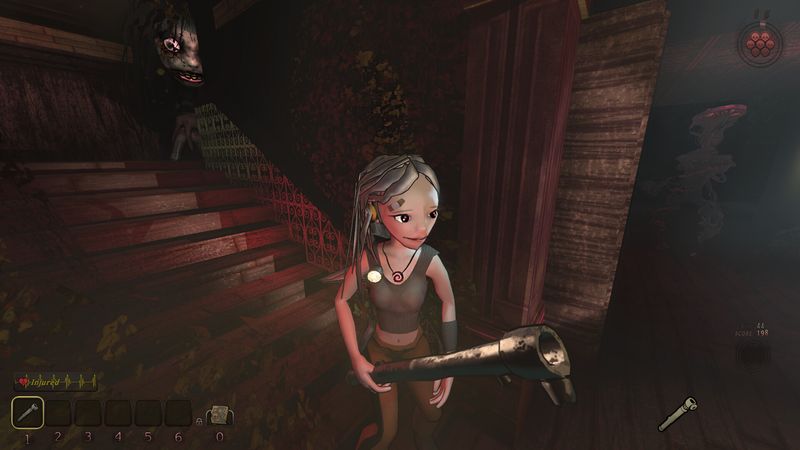
 Replay value is exceptional: procedural map generation combined with random boss words ensures each run feels distinct. Having already conquered fifty speed challenges, I can attest that chasing higher leaderboard rankings remains compelling long after the initial playthrough.
Replay value is exceptional: procedural map generation combined with random boss words ensures each run feels distinct. Having already conquered fifty speed challenges, I can attest that chasing higher leaderboard rankings remains compelling long after the initial playthrough.
 I replayed levels to master every weapon and typing combo, and achievements unlock secret skins and additional lore entries. This structure rewards completionists with tangible—and often narrative—rewards that deepen immersion.
I replayed levels to master every weapon and typing combo, and achievements unlock secret skins and additional lore entries. This structure rewards completionists with tangible—and often narrative—rewards that deepen immersion.
 Though I’d welcome more DLC maps, the core levels themselves offer a rich variety of movie genres, from slasher classics to sci-fi studio backlots. Each environment presents fresh thematic flair, keeping the experience feeling inventive and memorable.
Though I’d welcome more DLC maps, the core levels themselves offer a rich variety of movie genres, from slasher classics to sci-fi studio backlots. Each environment presents fresh thematic flair, keeping the experience feeling inventive and memorable.
 I achieved 100 percent completion in under ten hours. While the game is relatively short, it overflows with hidden secrets. In this compact package, Blood Typers rivals other indie horror titans like Amnesia, offering a similarly dense—and terrifying—adventure.
I achieved 100 percent completion in under ten hours. While the game is relatively short, it overflows with hidden secrets. In this compact package, Blood Typers rivals other indie horror titans like Amnesia, offering a similarly dense—and terrifying—adventure.
 Final thought: Blood Typers masterfully blends typing drills with survival horror, proving that small teams can innovate fear in unexpected ways. By turning every keystroke into a high-stakes decision, Outer Brain Studios pushes genre limits and delivers an adrenaline-fueled thrill ride.
Final thought: Blood Typers masterfully blends typing drills with survival horror, proving that small teams can innovate fear in unexpected ways. By turning every keystroke into a high-stakes decision, Outer Brain Studios pushes genre limits and delivers an adrenaline-fueled thrill ride.
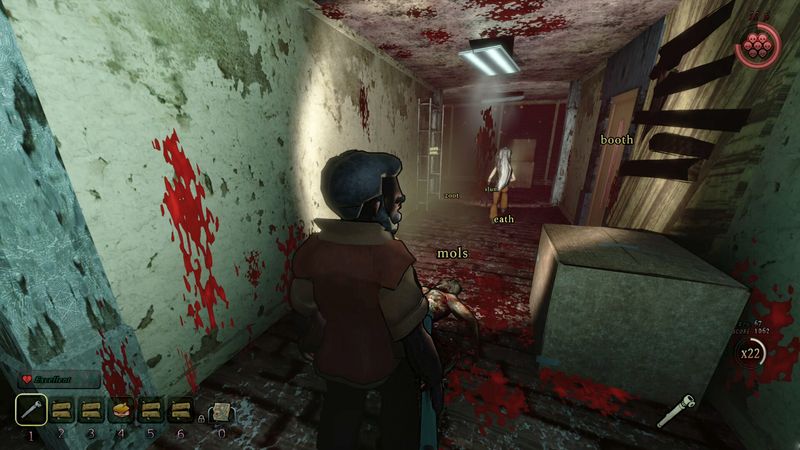
 Discover five thrilling survival and typing-based games you’ll love: The Typing of the Dead – Overkill injects classic horror with over-the-top zombie typing chaos, while Epistory – Typing Chronicles combines RPG depth with beautiful origami art. Nanotale – Typing Chronicles expands the magic-typing mechanics in a vast open world, and indie hit Zombeerance challenges you with keyboard-driven zombie shooting and resource management. For parkour action and co-op survival beyond typing, dive into Dying Light.
Discover five thrilling survival and typing-based games you’ll love: The Typing of the Dead – Overkill injects classic horror with over-the-top zombie typing chaos, while Epistory – Typing Chronicles combines RPG depth with beautiful origami art. Nanotale – Typing Chronicles expands the magic-typing mechanics in a vast open world, and indie hit Zombeerance challenges you with keyboard-driven zombie shooting and resource management. For parkour action and co-op survival beyond typing, dive into Dying Light.
